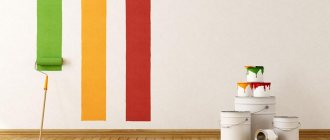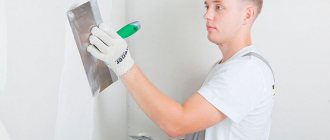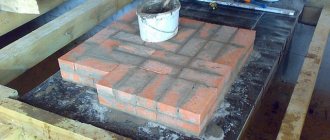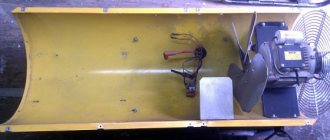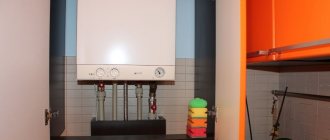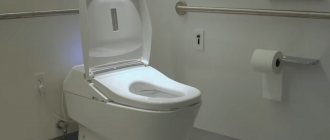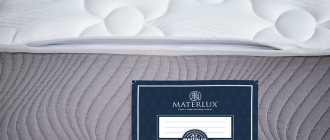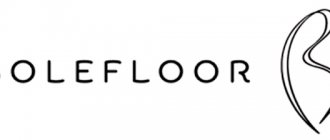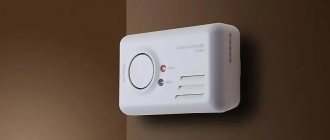Many different manufacturers, foreign, domestic and joint ventures, present their products on the Russian market. But in order to choose a truly high-quality engineering board, you need to know what advantages and disadvantages it may have, imagine its structure, and basic characteristics. It’s a good idea to always have information about the manufacturers of these products.
This is what we will dedicate this publication to - engineering board rating of manufacturers and rules for choosing quality materials. Let's start with the rating of manufacturers and a brief description of their products - this is for those visitors who came to us specifically in search of quality material. And in the second part of the article, those readers who do not yet fully understand what an engineered board is will find the necessary information about this floor covering.
TOP 8 manufacturers of engineered boards
| Photo | Name | Rating | Price | |
| #1 | Engineering board "Parkiet Hajnowka" | ⭐ 4.9 / 5 29 — votes | Go to description and prices | |
| #2 | Engineering board "Goodwin" | ⭐ 4.85 / 5 31 - voice | Go to description and prices | |
| #3 | Engineering board "Panaget" | ⭐ 4.75 / 5 6 — votes | Go to description and prices | |
| #4 | Engineering board "Greenline" | ⭐ 4.65 / 5 21 - voice | Go to description and prices | |
| #5 | Engineering board "Boen" | ⭐ 4.6 / 5 8 — votes | Go to description and prices | |
| #6 | Engineering board "Marco Ferutti" | ⭐ 4.6 / 5 6 — votes | Go to description and prices | |
| #7 | Engineering board "Coswick" | ⭐ 4.55 / 5 21 - voice | Go to description and prices | |
| #8 | Engineering board "Wood Bee" | ⭐ 4.5 / 5 5 — votes | Go to description and prices |
Which manufacturer's board would you recommend?
Take the survey
Engineering board "Wood Bee"
is based in the Netherlands, but a significant part of its products are manufactured in China, under strict quality control. So the “Chinese trace” does not harm the products.
Logo of the Dutch wood flooring company "Wood Bee"
The engineered board from this manufacturer has three layers. This type of coating was mastered by Wood Bee production in 2012. It is distinguished by high quality, but, however, at a considerable cost.
The engineered board is protected by seven layers of ultraviolet curing varnish. Thanks to this, the material is resistant to abrasive loads, and its service life is estimated at 15 years or more. Moreover, the thickness of the top layer of the board is 3 mm, and this margin is quite enough for sanding and subsequent varnishing if signs of wear do appear on the floor.
Each covering board is equipped with a chamfer on all four sides.
Engineered board "Wood Bee" - "Oak Natural Brush".
Characteristics of the material shown as an example in the illustration above:
| Parameter names | Indicators |
| Manufacturer country | The homeland of the brand is the Netherlands, production is China |
| Wood type | oak |
| Main color | beige-gold |
| Processing effect | fermented |
| Board covering | semi-matte varnish |
| Number of lanes | one |
| Presence of chamfer | There is |
| Installation on a "warm floor" system | not allowed |
| Top layer thickness, mm | 3 |
| Board dimensions, mm | 125×12×1200 |
| Quantity per package, m² | 3,0 |
| Number of boards per package and covered floor area pcs. / m² | 20 / 3,0 |
| Packing mass, kg | 20,5 |
pros
- Very aesthetic appearance.
- A very interesting brushing technique.
- Over several years of service, most owners did not have any complaints.
Minuses
- There was a case where the owners were annoyed by an unpleasant, difficult-to-remove chemical odor.
- There was some delamination of the board.
- There were complaints about insufficient resistance to mechanical stress (scratches from shoes).
Engineered board Wood Bee Oak Natural Brush
Engineering board "Coswick"
Coswick is a company with Canadian roots, which has located its main production facilities in Belarus, representing its
products on the market since 1995. Logo that distinguishes products
In 2002, the company mastered the production of products with an innovative coating using ProAlumTech ultraviolet varnishing technology. Thanks to new technologies, it was possible to obtain a durable and beautiful outer protective layer.
Since 2004, brushed boards with oils applied to them using the Silk Oil ultraviolet curing technology have been on sale, with the help of which the coating takes on a natural look, giving the interior a natural warmth.
Coswick began producing engineered multilayer boards in 2008.
Since 2014, under the Coswick Coating & Adhesives brand, the company has already been producing related products - these are parquet varnishes, adhesives and oils, parquet care compounds, sealants and other products.
Since 2015, the company has launched a line of wood products for exterior decoration - siding and decking boards.
An example of this is the engineered board “Coswick Brushed & Oiled Ash Canadian Cedar”
Engineered plank flooring “Coswick Brushed & Oiled Ash Canadian Cedar”
Material characteristics:
| Parameter names | Indicators |
| Manufacturer country | The homeland of the brand is Canada, production is Belarus |
| Wood type | ash |
| Main color | Dark brown |
| Processing effect | brushed |
| Board covering | silk oil |
| Number of lanes | one |
| Presence of chamfer | There is |
| Installation on a "warm floor" system | not allowed |
| Top layer thickness, mm | 4 |
| board width, mm | 127 |
| Thickness, mm | 19,05 |
| Length, mm | 2100 |
| Quantity per package, m² | 2,0 |
| Package weight, kg | 25 |
| Manufacturer's warranty, years | not installed |
It should be noted that the ratings received by consumers for this engineering board vary significantly. So, many users write that after several years of operation no shortcomings were noticed. Other buyers, on the contrary, are dissatisfied with almost everything, from appearance to quality and price.
pros
- A wide range of products will probably satisfy any consumer taste.
- In principle, a very balanced price-quality ratio.
- The floor covering turns out really beautiful.
Minuses
- There is a negative review that after a year the board began to come apart.
- Some people find the cost of coverage too high.
Engineered Board Coswick Brushed & Oiled Ash Canadian Cedar
Engineering board "Marco Ferutti"
Marco Ferutti is an Italian company known for its products throughout the world. The production of floor coverings under this brand was mastered more than 30 years ago, and during this period several collections of engineered boards were created - these are “Vario”, “Versailles”, “Hermitage” and “Linea”.
Italian logo
The use of modern technologies, as well as many years of experience, allows the manufacturer to produce products with the following characteristics:
- The board has a consistently strong base and a durable outer operational layer;
- Exotic and elite wood species perfectly matched to each other are used for production;
- Very original design solutions.
The illustration shows a coating made from an engineered board “Marco Ferutti Hermitage Oak Nero Brush”.
Characteristics of the material taken as an example:
| Parameter names | Indicators |
| Manufacturer country | Italy |
| Wood type | nut |
| Main color | dark brown |
| Processing effect | brushed |
| Board covering | UV varnish |
| Number of lanes | one |
| Presence of chamfer | There is |
| Installation on a "warm floor" system | not allowed |
| Top layer thickness, mm | 1.5 |
| Board dimensions, mm | 70×400×15 |
| Thickness, mm | 15 |
| Length, mm | 400 |
| Quantity per package, m² | 1.34 |
| Manufacturer's warranty, years | Not installed |
The reviews bear the imprint of subjectivity and, again, are quite contradictory.
pros
- Several years of fairly intensive use, and the coating serves without any problems.
- Refined aesthetic appearance of the floor covering.
Minuses
- The floor covering turned out to be not very moisture resistant. Therefore, it is not recommended to lay it in rooms with high humidity (this can probably be said about all decorative floors based on natural wood).
- Dents remain from objects that fell from a height (what kind of objects and from what height is not specified, but this, you see, is important...)
Engineered board Marco Ferutti Hermitage Oak
Engineering board "Boen"
Until 2015, the Norwegian flooring company provided these products only to the domestic market of its country. Today, offices are located not only in Norway, but also in Germany, the Baltic countries, and factories producing flooring are launched in the UK, Germany, Norway, USA and Lithuania.
The engineering board of the Boen brand is a product of the highest quality class
Engineered boards are supplied to Russia from Germany or Lithuania. Moreover, all incoming products of this brand belong to the premium class, since their sorting is carefully controlled.
Engineered board "Boen Oak Stone"
Characteristics of the engineered board “Boen Oak Stone”:
| Name of parameters | Meaning |
| Manufacturer country | The homeland of the brand is Norway, production is Norway, Germany or Lithuania |
| Wood type | oak |
| Main color | brown pastel |
| Board covering | Oil with wax “Live Natural” |
| Number of lanes | one |
| Presence of chamfer | There is |
| Installation on a "warm floor" system | Not allowed |
| Top layer thickness, mm | 3.5 |
| Board dimensions, mm | 135×1350×10,5 |
| Quantity per package, m² | 2.55 |
| Manufacturer's warranty, years | 25 |
pros
- There are no complaints at all about the quality of the coating.
- The board from the mentioned collection fits perfectly into interiors of various styles.
- A smooth, beautiful pattern is the result of careful selection of material.
- Easy to repair, since the worn coating just needs to be coated with a special compound - oil and wax.
Minuses
- Very high cost;
- The oiled floor covering must be renewed annually.
Engineered board Boen Oak Stone
Engineering board "Greenline"
This is a Russian company, and it produces floor coverings exclusively of its own design. The entire production cycle for manufacturing engineered boards is carried out by Greenline specialists at the facilities of one plant, so quality control is at the highest level.
"Greenline" - high-quality domestic floor coverings made of natural wood
European high-precision equipment contributes to the manufacture of products that meet all current standards of both the EU and the Russian Federation.
The main task is to produce exclusively highly reliable materials for flooring. Therefore, only high-quality raw materials are used for production, which are carefully selected and processed in compliance with all the subtleties of technology under strict control.
"Greenline" - engineering board "Artclick plus No. 102 stained oak"
Characteristics of the engineering board taken as an example:
| Parameter names | Indicators |
| Manufacturer country | Russia |
| Wood type | oak |
| Main color | dark brown |
| Processing effect | brushing |
| Board covering | varnish |
| Number of lanes | one |
| Presence of chamfer | There is |
| Installation on a "warm floor" system | not allowed |
| Top layer thickness, mm | 3.6 |
| Board dimensions, mm | 145×max1500×15 mm |
| Quantity per package, m² | 1.7 |
| Number of boards per package, pcs. | 8 |
| Manufacturer's warranty, years | 20 years |
pros
- In principle, there are no complaints about the quality.
- Very nice appearance.
- Excellent resistance to mechanical impact, including abrasion.
Minuses
- It turned out to be quite difficult to choose a plinth that would harmonize and not spoil the overall “rich” impression.
- When ordering, they brought packages of boards of different colors, that is, from different batches of collections. That is, the complaints are not about the quality of the material, but about the customer service...
Engineering board Greenline Artclick plus No. 102
Engineering board "Panaget"
French occupies a leading position in its country in the production of wooden flooring. Moreover, 85% of all products are made exclusively from oak.
It’s not for nothing that there is an oak leaf on the logo – the vast majority of products are made from French oak.
French oak has light, warm tones and a textured pattern called “chicken feet.” This pattern is formed on trees growing in swampy soil - the trunks are covered with rows of small branches and twigs.
"Panaget" produces engineered boards of different grades, and no other manufacturer has such a number of collections - these are "Prima" and Classic, "Traditional" and "Authentic", "Origin", "Zenitude" and others.
A special feature of this manufacturer’s products is the different lengths of the engineered boards included in the packaging. The difference in board length is especially convenient for covering small and medium-sized rooms.
Engineered plank floor “Panaget Diva” Oak Classic
Characteristics of the material shown in the illustration:
| Parameter names | Indicators |
| Manufacturer country | France |
| Wood type | oak |
| Main color | light brown, beige |
| Board covering | matte |
| Number of lanes | one |
| Presence of chamfer | There is |
| Board width, mm | 90 |
| Thickness, mm | 12 |
| Number of m² per package | 1.91 |
| Manufacturer's warranty, years | 20 |
pros
- Excellent quality of raw materials that undergo very strict selection.
- Long warranty period for coating material.
- When laid, a very interesting pattern is obtained, which becomes a real decoration of the floor.
Minuses
- The cost will seem very high to many.
- It is recommended to entrust the installation of this engineered board to professional craftsmen - there are some nuances, without knowing which you can easily “ruin” the material.
Engineered board Panaget Diva Oak Classic
Engineering board "Goodwin"
German-Russian produces a wide range of parquet floor coverings. Since 2022, the company began producing engineered boards, which fully correspond to the optimal price-quality balance.
One of the most popular brands of engineered boards is “Goodwin”
The basis for the products is birch plywood, which is equipped with numerous cuts on the reverse side to stabilize the wood. The outer layer of the board is solid wood with a beautiful textured pattern: oak, walnut, ash and other species. The thickness of the outer layer is 4 mm. The entire perimeter of the board is framed with a chamfer, which effectively emphasizes the shape of each of the floorboards and visually hides the micro-cracks that sometimes appear when the humidity in the room fluctuates.
The outer surface of the board is covered with several layers of ultraviolet-curing varnish. This coating very reliably protects the wood from abrasive loads, gives it high impact strength, and prevents the penetration of moisture into the structure of the material.
The Goodwin board is produced in a short length, only 1200 mm, and is mounted only using the adhesive method. The individual floorboards are connected to each other using a tongue-and-groove lock.
Engineered board “Goodwin Oak Capri”
Characteristics of the coating “Goodwin Oak Capri”:
| Parameter names | Indicators |
| Manufacturer country | Germany - Russia |
| Wood type | oak |
| Main color | brown |
| Processing effect | brushing |
| Board covering | matte |
| Number of lanes | one |
| Presence of chamfer | There is |
| Board width, mm | 160 |
| Thickness, mm | 16 |
| Number of m² per package | 24.5 |
| Package weight, kg | 14 |
| Manufacturer's warranty, years | 25 |
pros
- The use of birch plywood allows you to significantly reduce the price of engineered boards without reducing the overall quality of the coating.
- The large thickness of the top decorative layer is 4 mm, which will allow, if necessary, restoration of worn floor coverings.
- Attractive price against the backdrop of high quality boards.
Minuses
- It happened that in one batch the board may differ slightly in shade.
Engineered board Goodwin Oak Capri
Engineering board "Parkiet Hajnowka"
Parkiet Hajnowka is a family-owned woodworking company that has been successfully operating for about a hundred years. The company produces products using traditional and innovative technologies. High-precision German and Italian machines are used for sawing and slicing wood. The wood used as raw material for the manufacture of engineered boards is selected only for the highest quality category.
Parkiet Hajnowka is a company with old family traditions
Parkiet Hajnowka is a leader in the production of wooden floor coverings on the Polish market. Products are imported to many countries around the world, including Russia.
What’s interesting is that despite the rivalry with the biggest giants (or perhaps, on the contrary, precisely because of such rivalry), the products of this particular company are considered one of the best. They are distinguished by environmental friendliness, the highest quality and excellent aesthetics of the external design of the coatings.
Product example – engineered board “Hajnowka Oak Tabaco R”
Characteristics of the material shown:
| Parameter names | Indicators |
| Manufacturer country | Poland |
| Wood type | oak |
| Main color | golden brown |
| Processing effect | brushing |
| Board covering | wax and oil (Osmo) |
| Surface feel | brushed |
| Number of lanes | one |
| Presence of chamfer | There is |
| Installation on a "warm floor" system | yes, allowed |
| Top layer thickness, mm | 4 |
| board width, mm | 145 |
| Thickness, mm | 15 |
| Number of m² per package | 1 |
| Package weight, kg | 9 |
| Manufacturer's warranty, years | 30 |
pros
- Truly the highest quality products.
- For this level of quality, the cost of the material is relatively low.
- An extremely long warranty period from the manufacturer – 30 years!
- Wide range in collections.
Minuses
- There were no complaints, no significant comments were made.
Engineered board Parkiet Hajnowka Oak Tabaco R
* * * * * * *
Rating results
Kahrs-Upofloor products are at the top. Three brands of the concern entered the top ten. It is gratifying that the manufacturer takes into account the needs of customers for high-quality and inexpensive parquet, offering different board options from inexpensive models to luxury parquet.
The classic board is more trusted. Despite the fact that there are many manufacturers of veneer boards on the market, only a few of them are trusted by buyers. A board with a three-layer construction, made entirely of wood, is still valued. However, the demand for veneered boards is growing. This is due to the promotion of a new production technology - vacuum pressing from the Austrian brand Stöckl.
All other things being equal, quality is critical. If the buyer is satisfied with several brands at the price, the choice determines the quality of the coating. All other factors - the type of design, the presence/absence of a chamfer, and even the type of wood - fade into the background. Therefore, the rating included many brands offering high-quality parquet boards.
What you need to know about the engineering board
Structure and main characteristics of engineered boards
Engineered board is a two- or three-layer floor covering made of wood and wood-based materials. In another way it is also called technomassif.
The illustration below shows an approximate diagram of the structure of an engineered board
Engineering board - two- (left) and three-layer
- The top layer (item 1) of any type of engineered boards is always made from an array of valuable wood species, both visually beautiful with their texture and resistant to mechanical stress - this can be ash, oak, walnut and others.
The thickness of this layer for different models of engineered boards can reach from 1.5 (minimum) to 5 millimeters. The thicker the floor, the more sanding the floor can withstand if surface wear requires its restoration.
Decoration of the top layer wood is done in different ways. This, say, could be the brushing technique (very popular on engineered boards), staining, firing, artificial aging and other technologies. Then the surface is coated with an oil-wax composition or a special protective transparent varnish in several layers.
- Under the top decorative layer is hidden the load-bearing base of the engineered board (item 2). This role is most often played by a layer of moisture-resistant extra- or first-grade birch plywood. The thickness of such a base can be different - it depends on the characteristics of the board model. As a rule, it is in the plywood that the locking joints are cut out - grooves and ridges for connecting adjacent boards when installing the covering.
It is important that the top layer of plywood is always oriented so that its fibers are perpendicular to the fibers of the top decorative layer. This ensures maximum resistance of the engineered board to deformation.
- There are also three-layer varieties of engineered boards, and they can also differ. So, a layer of solid wood (item 3) can be used as the bottom base, not of the highest quality, of course, since decorativeness is not required here. Another option is another layer of plywood.
All layers are qualitatively glued together using a special technology in compliance with a special regime of pressure, humidity and temperature. Delamination in a quality engineered board is a very rare occurrence and is literally considered an “emergency.”
Engineered boards are produced both in standard sizes (each manufacturer has its own view of these standards) and to order. And in this case, its dimensions may vary.
- The length of the board can reach from 500 to, they say, 6000 mm. But such a long length, if it occurs, is extremely rare. Usually everything is limited to 1200 ÷ 2000 mm, since with longer boards the complexity of installation increases sharply. Some collections of leading manufacturers include planks and less than 1000 mm.
- The width of the board varies from 90 to 450 mm.
- The thickness can range from 10 to 20 mm, most often about 15 mm. The thicker the board, the more resistant to stress, the more durable it is, and the thicker the front layer is usually made of solid wood. Well, of course, the more expensive the material.
If you really want to be original, and you don’t mind spending money on it (considerable!).
then you can order something like this version of an engineered board. It seems incredible, but these boards, with all their curvature, have a perfect fit! It is interesting that in addition to the usual straight boards, some manufacturers also undertake to produce curved ones upon personal order. Moreover, with a perfect fit! Such a coating will certainly look very original, but it’s scary to even think about its cost...
One more nuance to finish with the structure of the engineering board. The fact is that it is often confused with parquet boards. Meanwhile, there is a difference.
Parquet board (in the illustration) and engineering board are not the same thing at all!
The top layer, yes, is also an array of valuable rocks. But the middle layer is assembled from dies of equal thickness made from inexpensive softwood. Both the properties of the coating and the price level are completely different here, and parquet boards still require separate consideration. It is wrong to confuse it with engineering.
Advantages and disadvantages of engineered boards
The engineering board has significant advantages over its “competitors”. To confirm this, here is a list of its obvious advantages :
- Due to the peculiarities of its design, the engineered board has high stability of shape and size. And this significantly reduces the likelihood of floor covering deformations.
- The natural coating of this material is inert to increased air humidity in the room.
- You can use a suitable installation method - combined, adhesive, doweled, locking, etc. According to the design, the installation can be not only the usual “deck”, but also squares, “herringbone”, etc.
- Possibility of carrying out restoration work when the coating is worn out in certain areas.
- If the board is mounted on a base using glue, then the more elastic it is, the higher the soundproofing effect of the board covering will be.
Laying engineered boards using the adhesive method
- Visually, engineered plank flooring is practically no different from natural solid wood flooring, and, of course, costs less.
- Under the engineered board covering, you can install a “floor heating” system. True, in the passport of the purchased model, it must be specifically stated that the coating, yes, allows installation in the “warm floor” system.
Installation of engineered boards on a substrate, that is, according to the “floating” coating principle
- Wide range of design solutions. By the way, you can find on sale not only models with a factory-decorated top layer. Some consumers prefer simply a board made of valuable wood, unpainted on the front side, which they can process at their discretion after installation of the coating.
- Long service life, which can amount to several tens of years. By the way, some manufacturers are not afraid to give a guarantee for even 20 ÷ 25 years.
- Some manufacturers provide customers with the opportunity to place an order for the production of a batch of boards with a certain design design, as well as with selected dimensional parameters.
However, despite its many advantages, the engineering board also has some disadvantages :
- Quite a high price compared to other floor coverings that look like wood.
- It is very difficult to install (and dismantle, if necessary, without damaging) such a floor covering. So if you are thinking about finishing the floor with engineered boards, then you should add the specified price for installation work to the cost of the material itself. Unskilled installation on your own can lead to damage to the expensive coating.
As a rule, it is these shortcomings that serve as the main motivating reasons to abandon the engineered board in favor of some cheaper coating. But you should correctly understand that engineered board provides an almost complete imitation of natural solid wood, being cheaper than it. Plus, add to this the long service life of a high-quality coating - and the high cost immediately looks completely justified.
Grade of engineering board
Natural wood is a special material. Therefore, even with the most scrupulous adherence to the technology of its processing, different results are possible at the output. And the products undergo a thorough sorting stage
Therefore, in order to make a choice, it is necessary to have information about the varieties of this material.
There are three main types of coating. However, besides them, some manufacturers introduce only three main varieties for their products.
Elite grade engineered board covering "Select"
- “Select” is an elite grade of engineered board, although it practically does not differ from lower grades in design and color scheme. The main difference lies in the manufacturing technology of the top massive layer and its quality. The blanks are sawn radially, that is, along the grain of the wood. This gives both a beautiful textured pattern and increased strength.
Of course, this type of engineered board has the highest cost, but the durability of the coating is also maximum. The thickness of the outer layer starts from 3 mm. This expensive coating in an apartment would probably only be suitable for a rich living room.
“Natur” grade of engineering board
- “Natur” is a variety of mid-price level, and therefore of the same quality. In this embodiment, the top layer consists of solid wood, which is sawn tangentially. It is difficult to detect flaws on such a coating, but it is still possible.
This material is quite suitable for flooring in bedrooms, children’s rooms and kitchens, that is, in rooms with not particularly high intensity of people’s movement. This variety is also well suited for flooring in country houses, as it can easily withstand temperature changes.
Engineered board belonging to the “Rustic” grade
- “Rustic” is a grade for the top massive layer of which either material is left that has not passed into two higher grades, or the cut angle of which is simply not standardized when cutting workpieces. Therefore, the pattern on the board may not be uniform.
It is clear that the cost of “rustic” will be minimal compared to higher varieties. This covering option is used in hallways, country houses, offices, kindergartens or schools, etc.
Methods for laying engineered boards
As mentioned above, this flooring can be laid in different ways - adhesive, floating and a combination.
Installation of engineered boards with glue
- Glue method. In this case, a polymer one- or two-component composition is used for installation. The basis for laying the board can be a well-leveled screed, plywood, OSB or chipboard. The main thing is that the material chosen for the base is strong, smooth and hard. In order for the coating to be neat and durable, the base must be carefully prepared, and the installation itself must be carried out based on a carefully thought-out scheme. Errors made during installation will be quite difficult to eliminate, since high-quality glue sets very quickly.
Combined method of installing engineered boards
- Combined method. In this case, glue and fasteners are used to fix the board to the base - these can be nails, staples or self-tapping screws. The glue is applied to the base with a notched trowel, and after pressing the board to the base, fasteners are screwed or driven into its grooves. To avoid damaging the groove of the board when fastening, it is recommended to first drill holes in them with a thin drill, otherwise it may split.
Due to the fact that this fastening method consists of several stages, it can be called the most labor-intensive and costly. However, according to experts, such fixation is the most practical of all types of installation, as it ensures a tight connection of the coating elements and is the most durable in operation. True, dismantling also becomes the most problematic.
- The “floating” method of laying engineered boards involves minimal costs - no expensive glue or fasteners are required. And in terms of execution speed, there is a clear gain.
The boards are fastened together using special locking connections. Installation of the floor covering is carried out on a special perforated substrate. The length of the board should not be more than 2200 mm, otherwise it will be very difficult to connect it with locks.
When choosing this method, it will also be necessary to perfectly level the base. If glue can hide minor surface flaws, then there is nothing to hope for at all. It is imperative to leave a compensation gap around the perimeter of the floor between it and the wall so that unnecessary internal stresses and deformations do not occur during natural temperature or humidity fluctuations in the size of the floating coating.
Maintenance of engineered boards
In order for the engineered wood floor covering to retain its original appearance for as long as possible, it is necessary to follow some recommendations for its use and care.
Wet cleaning of engineered wood flooring
- To clean such plank flooring, only special detergents should be used.
- Polishing the floor (if it is treated with oil or wax polishes, and not PU varnish) should be done several times a year. This is usually indicated by the manufacturer in the accompanying recommendations.
- To prevent furniture legs from damaging the outer layer of the board, it is recommended to stick special felt pads on them - they can be easily purchased at a hardware or furniture store. As a rule, such overlays are equipped on one side with an adhesive layer, temporarily covered with a protective backing.
Furniture leg pads can be made of felt or rubber, which do not leave marks on the surface
- The top layer of the engineered board is an array of durable wood. However, to avoid leaving marks on the floor, it is still not recommended to wear thin stiletto heels. If you do not want to periodically wipe off traces of black rubber left from the soles of street shoes from the floor covering, then you should walk on it barefoot or in soft house slippers. Or use in places where street shoes cannot be excluded in any way, other floor coverings, the “trampling” of which will not be so “excruciatingly painful” to look at
* * * * * * *
We hope that the information obtained from reading this publication about the structure, features, characteristics of engineered boards, and its leading manufacturers will help you choose the best option for your home more easily and without errors. Don’t forget to visit the official websites of the companies mentioned in the article - the variety of possible options may be a “revelation” for some.
Let's finish the publication with a video that highlights the features of this not quite ordinary floor covering - engineered wood.
Advantages and disadvantages
Engineered boards have a number of advantages compared to standard models that are sold at a low price:
But such a solution also has disadvantages. The first is the high cost of a quality product. The second is a high chance of purchasing low-quality engineered coating. To avoid the second case, you must purchase goods only in specialized stores that provide a guarantee.
In some cases, a person can buy a quality product at a big discount. In this case, the strength characteristics will not be lost. To do this, you should choose last year's collection, with special attention paid to the brand.
Popular vote
Which manufacturer's board would you recommend?
Engineering board "Parkiet Hajnowka"
22.83 % ( 29 )
Engineering board "Goodwin"
24.41 % ( 31 )
Engineering board "Panaget"
4.72 % ( 6 )
Engineering board "Greenline"
16.54 % ( 21 )
Engineering board "Boen"
6.30 % ( 8 )
Engineering board "Marco Ferutti"
4.72 % ( 6 )
Engineering board "Coswick"
16.54 % ( 21 )
Features of flooring
The first thing a buyer notices when choosing an engineered board is the presence of three layers, which guarantee reliability and practicality. There are also budget versions consisting of two rows, where the first part is plywood and the second is wood. In the first version, all layers are made only of wood.
The advantage of engineered wood is its high strength properties and absence of deformation, even with prolonged use. In appearance, the product resembles standard parquet. Builders recommend using the material if the flooring is constantly exposed to mechanical stress.
Installation options
The first popular option is mounting on plywood. It is important to understand that the material used must have a thickness of up to 15 mm. Masonry is allowed only on a base made of concrete. For tight fixation, plywood is attached using special glue or self-tapping screws. At the end of the work, it is necessary to sand the top layer, but it is recommended to do this after 2 days.
- The engineered board is placed on a plywood surface. To ensure a tight fit and no air pockets forming inside, polyurethane-based adhesive is used. For even application, use a spatula. Once the laying is complete, you should avoid putting any weight on the floor for three days.
- In addition to this option, some builders carry out masonry on a concrete base, without the use of auxiliary materials. The process is no different from the previous one, the only requirement is that the surface must be leveled. This will increase the performance and durability of the structure.
As soon as the glue has dried, you should remove all the gaps that form near the walls; skirting boards are used for this.
Proper Maintenance
To improve performance characteristics, you should not only carry out high-quality masonry, but also carry out timely maintenance:
- Polish is applied to the outer part 5-8 times every 12 months;
- Use carpets to prevent mechanical stress: it is best to choose felt products, they are of higher quality and will help maintain an aesthetic appearance;
- When washing floors, you should use only appropriate detergents, for example, Osmo Wisch-Fix is widely popular;
- Walking in heels on ID is prohibited, especially if you do it often. Because of this, cracks and dents form, which spoils the appearance and worsens the technical characteristics.
By following these rules, a person will be able to increase their service life by 1.5-2 times. And the surface will always remain clean and tidy.
N3. Weitzer Parkett
The company from Austria is the oldest manufacturer of parquet boards, which has been ranked among the best for many years. The company began producing parquet in 1955, annually adding new inventions to its collections. At the moment, the Austrian brand has more than 3,500 options for parquet boards, ranging from single-piece solid wood to multi-layer premium parquet. The main feature is cooperation with Greenpeace, which confirms the environmental safety of products at the highest level.
Weitzer Parkett aims to increase service life and comfort of use. The company was the first among its peers to develop a parquet board equipped with sound insulation. This decision was the main impetus for gaining great popularity among residents of apartment buildings. It’s not for nothing that Weitzer flooring is called “quiet flooring” in other words.
Main advantages:
- Large selection of wide and narrow parquet with a variety of effects.
- Natural wood is used, 75% of which is grown on the company’s premises.
- Along the entire perimeter of the board and its ends are treated with water-repellent hydrostop.
- Installation of products is carried out using the Double Click system.
- The product lasts for about 30 years.
Laying method
Consider the advantages of each method.
Laying in the lock:
- efficiency of work;
- the ability to lay the coating yourself;
- dismantling and installation in a new location;
- if a board is damaged, it is possible to disassemble a piece of flooring and lay it again, replacing the board with a new one;
- installation costs are significantly lower.
Glue method:
- allows you to lay the board in a single field throughout the apartment without breaks; sound insulation increases;
- no squeaking of the slats, quiet walking;
- maintainability - scraping, grinding. Sufficient thickness of the top layer allows the board to be restored after several years. Based on the results of restoration, it is possible not only to update the structure, but also to change the tone and select the optimal type of coating in accordance with the interior design.
Among the disadvantages of the adhesive method, the difficulty of installation should be noted. Not every master can cope with this task, so you need to entrust the work to a professional, especially if the installation takes place on a screed without plywood. Also, the cost of such work is an order of magnitude higher than floating installation (about 2-3 times), and it is necessary to purchase parquet chemicals: glue and primer. But such parquet will last a longer time, and it does not need to be replaced entirely, for example, after 10 years. It will be enough to sand and re-coat with varnish or oil.

